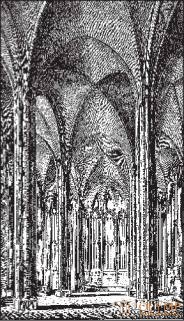
Architecture
In Northern Germany, it is necessary to distinguish the Middle German region, where buildings are constructed of hewn stone, and the North German lowland area, where brick constructions predominate. What role in the appearance of the Gothic style in Germany was played by the cathedrals of the old Saxony, we have indicated above. Over the construction of the Magdeburg Cathedral, before the end of the first period of its construction (until 1234), a number of architects worked successively, of which even the last one, which gave the longitudinal body widely spaced arcades without intermediate backwaters, had not yet fully understood the Gothic system. Only in the XIV century. completed the longitudinal body in the style of high, partly late Gothic. In Halberstadt Cathedral, the western side of which in its middle part belongs to the buildings of transitional time, the western parts of the side aisles, built in a noble, purely Gothic style, belong to the second half of the 13th century, while the rest of the cathedral arose in the 14th and 15th centuries. The cathedral in Naumburg, which serves as one of the main evidences of the emergence of the German transitional style through the influence of the French early Gothic, received its gothic, dignified Western choir with a simple trilateral ending in the second half of the 13th century. Adjacent to it are the choir and the transept of the magnificent Meissen Cathedral towering proudly over the Elbe (built in 1274). Its longitudinal body, which had originally a basilic form, was turned into a hall structure in the XIV century. But the most extensive church of the hall system in the Saxon countries is the five-oil church of Sts. Mary in Mühlhausen, in Thuringia.

Fig. 282. The interior of the Church of Our Lady of Zesta in a meadow. Around the house
Nevertheless, Westphalia is the birthplace of hall churches in Germany. Only here the hall form prevailed in the church architecture already in the XIII century. However, there is no need to see in this, together with Degio, the result of direct or indirect influence of the West-French hall architecture. The Westphalians could also independently emerge a desire to unite the inner space of the temple with the help of aisles of equal height. From the monuments of the XIII century it is necessary to distinguish the cathedrals in Paderborn and Minden. The Minden Cathedral in this respect represents the main monument of the XIV century due to its proportions, due to the widely spaced pillars, as well as to the richness and originality of the motifs in the carving of window covers. Of the temples of the XIV century, the church of St.. Mary in Herford and the Church of Our Lady on the meadow in Zöste; both of them are classic hall churches, with an almost square foundation in terms. On the contrary, the Church of Our Lady in Munster and the Church of Sts. Catherine in Osnabrück are approaching the more extended in length churches of Hesse. Due to the absence of capitals at the complex pillars, which is observed, for example, in the Church of Our Lady on the meadow in Söste (Fig. 282), their service columns go directly into the ribs of the vaults. The sequence of the Gothic style is brought to its extreme conclusions. The resulting clear general view of the interior of the temple with the hall system is devoid, however, of rhythm in the alternation of forms and the beauty of various ornaments, but produces a meaningful, simple and calming impression peculiar to it. Of the secular buildings of these localities, attention is focused mainly on the town hall of Münster (in Westphalia) and Braunschweig. Both of them have covered galleries along the lower floor, which in Brunswick Town Hall (1393) produce the more picturesque impression that they are repeated in the two wings, forming a right angle to the square. Both town halls are luxuriously decorated with motifs of Gothic ornamentation.
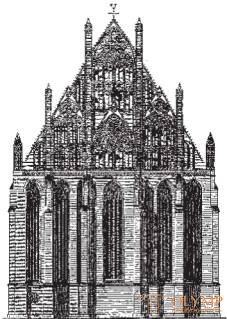
Fig. 283. Church of sv. Mary in Prenzlau. According to Adler
In countries with brick buildings, as we have seen, already in the transitional period from the previous to the era under consideration, Brandenburg stands out. The façade of a charming, slim Cistercian church in Khorin brought to life an independent brick gothic style. But after the Cistercian gothic, the gothic style of mendicant orders appeared here, giving the hall shape to a brick building. Of the churches of this kind the earliest - the church of St.. Mary in Neubrandenburg (1298). Her rich pediment above the straight-cut choir translates the stone decorative decoration of the Strasbourg Cathedral into the forms of brick architecture. In the noble proportions of the church of St. Maria (Marienkirche) in Prenzlau (1326–1340) is a lush eastern pediment revived in alternating rows of red and black-eyed bricks (Fig. 283). This style becomes richer at the turn of the XV century in the churches of St.. Mary in Koenigsberg (in Neumark), of sv. Catherine in Brandenburg and St. Stefan in Tangermünde. The decoration of these churches and magnificent town halls, of which the Brandenburg deserves a mention, manifested a new, original artistic style. Interesting, but not so elegant are brick Gothic buildings in the Baltic regions. The tone of the city of the Hanseatic League is set here: Lübeck, Wismar, Rostock, Stralsund and Greifswald. The architecture is dominated by the French basilic form with a choral circuit and a crown of chapels. The trade relations of these cities with the west contributed to the penetration of French high Gothic here, nevertheless, in these huge church buildings, modest in detail, often topped with two towers with slender, simple pyramidal spiers, expressed the powerful national spirit. The monotony of pale-red brick walls is animated by alternating red bricks with black-eyed, sometimes colored tiles or the white coloring of simple carvings of ornaments. The earliest high gothic building is the Church of Our Lady in Lübeck (1270–1310). In the XIV century, the church of St.. Mary in Wismar and Rostock, church of sv. Nicholas - in Wismar, Stralsund and Greifswalde. This style is particularly graceful in the Cistercian church in Doberan. The combination of multicolored dark-glazed tile gives a particularly pleasant impression in facing the walls of the “reliquary” [8], standing next to this church and in a shape resembling a baptistery.
In contrast to the Baltic basilicas in Prussia, under the influence of the Brandenburg architecture, the hall system, mostly with a direct ending of the choir, with octagonal pillars and star-shaped or reticulated vaults, already received dominance at that time. The church hall of this kind is the church of Saint. St. John in Thorn, but the main hall building here is the noble, richly decorated cathedral in Frauenburg, finished in 1388.
Of the civilian buildings in these countries, a significant role was played, of course, by the town hall and the mall of the Baltic Hanseatic cities. In Lübeck, from the 14th century, a spectacular, smooth-top fence, located in front of the three gables of the south side of the old town hall, remained. Dismembered by octagonal turrets, lightened by round openings and fake arches, with its carved frieze, it is a remarkable building that caused many imitations.
The shopping arcades in Danzig, known as the Artus Court, belong in part to the 14th century. The town hall in Marienburg, with its lacquered covered gallery, rectangular windows, pointed arches, a crown of teeth between the six-sided corner turrets, represents the superb Gothic construction of the second half of the 14th century. But special attention should be paid to the castles and fortresses of the German Order, from which German and Christian art and culture in the XIII and XIV centuries spread their life-giving rays across the eastern borders. The castle of the order in Marienburg, published at the end of the XVIII century by F. Frick, the most extensive and magnificent medieval residential building of the surviving in Germany. The Old Castle was founded in 1280, the High Castle was rebuilt in 1324–1335, the Middle Castle arose in the second half of the 14th century; this whole complex of buildings was restored in the XIX century. In the old High Castle there is a remarkable two-room hall of the chapter - a huge vaulted room, the corner service columns of which rest on sculpturally decorated consoles. In the Middle Castle is the Knight's Hall (Remter); the ribs of its arches, supported by three thin columns of red granite, expand fanlike like palm leaves; in the upper, third floor of the side building, the battlements of which are crowned with corner towers, was the dwelling of the Grand Master of the Order. Coverage of its main square rooms with highly branched mesh arches rely on only one central column. The whole building, imitations of which are, for example, the castle of the same order in Reden and the episcopal palace in Heilsberg (1350–1401), gives a strong impression not so much on the richness of individual parts as on the boldness of the architecture of the whole building and the nobility of proportions. It is these buildings clearly convince us that the Gothic by that time has long been a part of German art.
The art of the north of the Netherlands in the 13th and 14th centuries did not differ in particular development. The first building in Holland in the style of French high Gothic music was the choir of the Utrecht Cathedral, equipped with a circuit and a crown of chapels. Its five-oil longitudinal body in 1674 was turned into a pile of ruins by a storm and has not been restored since then. In the Gothic style of the XIV century, for example, the Old Church in Amsterdam and the Church of Sts. Petra in Leiden; low side naves here are separated from the middle nave by round columns with leafy capitals; the middle aisles, however, still have wooden vaulted flooring.
Remarkable rural churches in Friesland and Groningen, in which Degio saw, at least, the indirect influence of Western French buildings. Their longitudinal body consists of four naves, dome-shaped vaults have eight ribs, and individual forms are characteristic of a modest brick Gothic. Churches of this kind are located in Stedum, Thermünden, Zvidbrek and Vinshoten.
Plastics
Around 1250, the Middle and Upper Saxon plastics (see fig. 191–198) reach considerable heights and works appear, although not very significant in design, but clear and noble in style. Formerly, this style was called Romanesque, now it is called Gothic. However, both of these designations, precisely in relation to Saxon sculpture, can be misleading. The desire for greater freedom and purity of form runs through the entire XIII century. Only around 1300, with the appearance of the Gothic bend in the figures, decay begins to show up here; At the same time, a special direction, which aims at realism of the image in the spirit of the upcoming 15th century, represents a new artistic advance.
In Magdeburg and Münster, as in Bamberg and Strasbourg, the middle of the XIII century brings a pronounced line, due to which the sculptures of Freiberg and Vekselburg are absolutely not identical to the sculptures of Naumburg Cathedral. Let us dwell on eight male and four female large statues of donors and benefactors of the Naumburg Cathedral, set around 1270 at the pillars of its western choir. Despite the fact that the source of their style is the French high Gothic, these statues in their strength and moderate naturalism - completely German works (Fig. 284). Approximately one generation younger than the Freiberg sculptures, they differ from the latter with greater vitality, more stable posture, more loose folds. Then follow lecture sculptures (see fig. 195). The large group of the Crucifixion with Mary and John and the relief frieze with the Passion are extremely truthful in form and produce the strongest impression of the fullness and depth of spiritual expression, which especially imbued with the wounded, all covered in blood with the head of the crucified Christ. These sculptures are almost the best creations of all medieval art. The figures of the donors in the Meissen Cathedral choir are less balanced compared to the Naumburg statues. The features of their faces, now smiling, now distorted by suffering, are harmed by the premeditation of their expression. The figures of the Madonna and both Johannes in the chapel of St.. John, finished in 1291, in the same cathedral, already distinguished by the mannered liveliness of the late Gothic, but compared to the sculptures of the princely chapel (1342), still seem to be mature works.
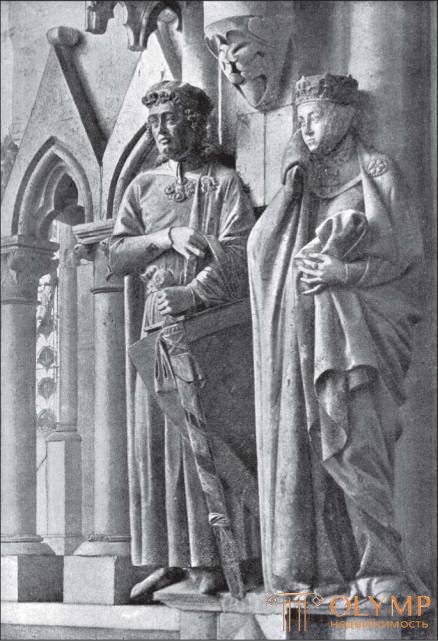
Fig. 284. Statues of Ekkergard Meissensky and his wife Uty von Ballenstedt in Naumburg Cathedral. With photos of Flottwell
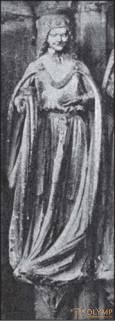
Fig. 285. One of the wise virgins. Statue in the Magdeburg Cathedral. According to Gazak
The seated statues of Emperor Otto and his wife Edita, in a choral round of the Magdeburg Cathedral, are enlivened by the preserved coloring. Statues of the wise and foolish virgins, which appeared at the end of the 13th century (Fig. 285), are located on the Paradise Gate of the porch of the northern portal by free movements and transmission of spiritual mood. The “Church” and “Synagogue” figures are more mannered and at the same time less vital. The cold style of the 14th century is found in the relief of the Assumption of the Virgin in the tympanum of this portal; A new motive gives him a certain significance - the carrying of angels to heaven by angels. One of the main works of the second half of the 13th century in Magdeburg was the stone equestrian statue of Otto the Great, standing in front of the town hall on a high pedestal adorned with figures of knights. The emperor's horse is led by the bridles by two female somewhat coarse, but stately figures. The horse and rider are made in the ideal style of monumental plastics of the XIII century. The head of the emperor is a masterpiece in its wide stylization of nature. The horse is also freer in form and movement than the horse of the Bamberg Cathedral.
To get an idea of the Westphalian plastic of this time, one must return to the vestibule of the Münster Cathedral. Along with the Romanesque figures of the apostles, at the entrance wall of this porch four statues of the side walls (to the left — the knight and St. Magdalene with the “sacrificer”; to the right, the bishop and St. Lawrence with the “giver”) are made in a freer manner of the second half of the 13th century. However, the Westphalian origin of these statues is doubtful. Perhaps, they are made by the Upper Reyn master.
Sculptures of the XIV century were preserved in Braunschweig and Erfurt. The sculptural decoration of both portals of the church of sv. Martina in Braunschweig, of which the Doors of Brides with the figures of wise and foolish virgins are known, stands above the sculptures of the Erfurt Cathedral. The best works in Erfurt have the Church of the Order of Preachers, the Church of the Barefoot and the Church of Sts. North, as pointed out by Paul Greynert. Especially the images on the plots from the lives of saints of the end of the XIV century in the church of Sts. The north characterizes the transition to the realism of the new time.
In northern Germany, stone tombstones have also been preserved - slabs with relief images of the dead and sarcophagi with figures lying on them, surrounded by the pattern of Burgundy (see Fig. 260), and small statues of mourners. The gravestone reliefs of Bishop Bernward in Hildesheim Cathedral and some young knight in the Cathedral of Merseburg are simple and graceful around 1300. The tombstone to the duke Henry IV (died in 1290) is magnificent in the Church of the Holy Cross in Breslavl: the reclining figure of the duke is molded of clay and painted; The hearse is surrounded by statues of mourners. Masterpieces of stone gravestone plastics of the end of the XIV century - a monument to Count Gunther XXV and his wife in the Church of Our Lady in Arnstadt and a monument to Count Gebgard XVII in the Church of Quedlinburg Castle. The blessing figure of Archbishop Otto of Hesse (died in 1361) in the Magdeburg Cathedral is magnificent.
Directly in the north of Germany there is no stone plasticity due to the lack of material. But here developed woodcarving and foundry. There are also stucco works in a knock.
Wooden carved altars, often equipped with picturesque doors, always richly painted and gilded, appear from the middle of the XIV century more often, but the forms remain coarse and imperfect. The art of Lübeck, the head of the Hanseatic League, dependent, as Goldschmidt proved, on Westphalian art, gave such relatively mature works as 16 figures from a knock at the Lübeck Museum and local choir benches decorated with Old Testament figures with disproportionately small heads. In Hamburg in 1379, the master altar was made by master Bertram, returned by Likhtvark’s efforts from Grabow to Mecklenburg. We will return to his picturesque doors. The sculptural middle part depicts the Crucified One between Mary and John; numerous angular figures of saints with large heads and gaze are carved on the inner wings;at the foot of the altar is the Annunciation, and on its sides are 10 seated figures, completely uninteresting.
Cast metal products are also of little artistic interest. By 1290 is the bronze font of the Church of Our Lady in Rostock. The crouched figures supporting it initially depicted four rivers of paradise, but later, by means of inscriptions, they were given the meaning of four elements. The baths of Hans Apengeter "from the Saxon land", located in the church of St. Nicholas in Kiel, as well as the seven-candlestick of the Church of Our Lady in Kohlberg, decorated with the figures of the apostles, show that in the XIV century, foundry art was improved very slowly. Bronze works with relief figures of the dead are very rare. A remarkable in its kind bronze gravestone statue of Bishop Heinrich von Bekolt (died in 1341) in the Lübeck Cathedral. It is doubtful, however, that this monument was cast in Lübeck.
Undoubtedly of Dutch origin are engraved metal tombstones often found in North German churches (see below).
Painting
Upper and Lower Saxon painting of 1250–1400, the period of high Gothic, no longer has that artistic and historical value that it had in the previous epoch.
True, church and secular wall painting everywhere found wide application, but most of its monuments, such as the painting of the Halberstadt Cathedral, did not reach us. Even in Lower Saxon Westphalia, about which medieval painting Nordgoff wrote, only a few surviving works can be noted. The fresco of the Münster Cathedral of the last third of the XIII century, representing the Christianized friezes at the moment when they bring the gifts of St. Paul, more curious in its content than in artistic execution. In the Baltic regions, remnants of decorative painting from the 14th century are found, for example, in the cathedrals of Schleswig, Lübeck, Wismar, Rostock and Doberan. Here we find vines on white backgrounds, round medallions with animal figures and blunt trees; all this is entwined with intertwining wavy stripes and curls still preserved from antiquity, but heavily modified acanthus. The most characteristic thing that we will find in the search for real North-German frescoes of the 14th century is the strongly renewed frescoes of the Wingausen monastery near Celle and the cloister of the Schleswig Cathedral. The single-nave Gothic monastic church in Wingausen is covered with four cross vaults. All walls, arches and inner surfaces of the arches are decorated with scenes from the Bible and the lives of the saints, placed inside the rich frames. The naked bodies of the compositions “The Fall” and “The Expulsion of the Progenitors from Paradise” (Fig. 286) are very good in execution. In terms of style, these murals represent contour flat-colored drawings. This coloring, rich in colors, is somewhat harsh due to the predominance of fiery red. By the beginning of the 14th century, in Schleswig Cathedral belong, as Gotsen proved, frescoes in the lunches of three adjacent sides of the cloister's gallery. New Testament compositions are placed here on a white background and made in a red contour drawing without coloring (perhaps destroyed by time), with restless and mannered curved body shapes in the style of that century.
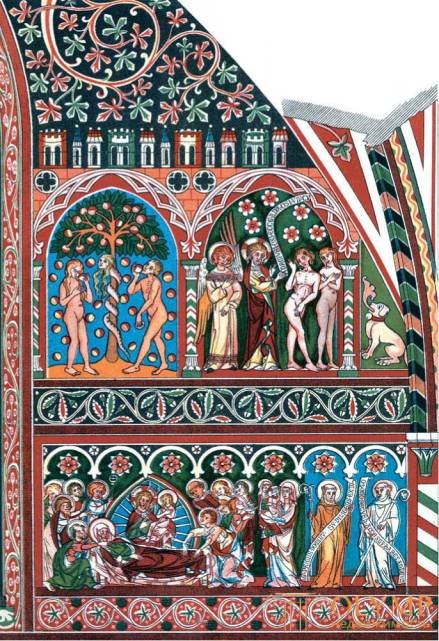
Fig. 286. The Fall and the Expulsion of the Progenitors from Paradise (above). The frescoes in the church at Wingausen. By Borrmann
At the end of the 13th century, Erfurt was famous for its stained glass windows (the windows of the Church of the Order of Preachers), Naumburg (the windows of the western choir of its cathedral with virtues and vices, and the windows of the Eastern choir with the lives of saints) and Halberstadt (luxurious windows of the Cathedral Chapel of Our Lady). Zest, a flourishing Westphalian city, spreading their right [9] and their art throughout the north. The high and narrow windows of the choir of the Church of Our Lady in the meadow, with saints under canopies, angels in four-leaved frames and small images of the Crucifixion and the Last Judgment are examples of the artistic performance of the building rich in design and light-filled.
Woven and embroidered carpets, complementing the colorful effect of stained glass windows and frescoes, were preserved in significant numbers in Northern Germany. For example, carpets of the XIV century with images from “Tristan and Isolde” are known in the monastery in Wingausen, near Celle, and in the Erfurt Cathedral. Further, we can mention the famous embroidered altar veil in the Church of Our Lady in a meadow in Söste.
Interesting easel painting. True, after the rise, which we could observe here in the previous epoch, there came a certain decline that lasted for about a century. And in the painting of Zest, one can see a gradual change in the Gothic forms, with the backgrounds remaining golden. The figures are made more naturally than in the modern Cologne school, but the technique is worse, and the colors with the beginning plastic modeling of the naked body give particularly cold combinations. The altarpiece of the Church of Our Lady in the meadow (about 1380), located in the Münster Museum, depicts the Savior sitting on the throne in the middle of the slender figures of the apostles. Above in execution are small compositions of the Gothic altar (circa 1300), representing Christ as a gardener, Adoration of the Magi and Thomas’s disbelief on a red background studded with gold stars. The influence of the Cologne master Wilhelm discovers the painting “The Coronation of the Blessed Virgin” from Zest, in the same museum. The connection between Westphalian art and the art of the neighboring Rhine countries is evident, but in general Westphalia retains its Lower Saxon character in contrast to the Lower Frankish nature of the Rhine countries. In the middle of the 14th century, the Minden School joined the school of easel painting of Zest, the study of which we owe to Nordhoff and Lichtvark. Of the Minden artists, master Bertrand stands out in the last quarter of this century. The Hamburg documents show that he moved from Minden to Hamburg, where he worked already in 1367, and in 1379, he performed the main altar for the church of Sts. Peter, who was previously in Grabow, in Mecklenburg. Its outer doors are decorated with twelve images on a gold background and belong to the most important monuments of North German painting of this era. The top six compositions relate to the history of creation, in the bottom row there are three Old Testament scenes along with the Annunciation, Christmas and Adoration of the Magi. The figures are loose, as if boneless. "The naked body is here," said Likhtvark, "only a memory and a premonition." Extremely bright clothing colors, however, meet the tastes of the seaside city, are unusual even for Westphalia. Next to the altar from Grabov, should be put the altar from Buxtegud, both belong to the Hamburg Art Museum. The works of the master Bertrand also reflect the transition from the old art to the new, and the history of his life proves that it was Westphalian art that befell to fertilize the north and north-east of Germany with new ideas.
Note the easel painting of the XIV century. in Holland. The large Utrecht image in the Antwerp Museum with the Crucifixion on a gold background, made in the Gothic style, is interesting because it is marked with the date - 1363. It shows the style of the Cologne school before being improved by its master Wilhelm. Since already Wolfram von Eschenbach called the center of North German painting Maastricht together with Cologne, the Utrecht image could have arisen both in this city and in Utrecht itself or in Cologne, but nevertheless as a single monument it can not at all serve as evidence that Cologne school this time has its origin from Holland, as Taurel believed.
The miniature painting of the considered epoch was not much distinguished. The illustrations of the manuscripts of the Saxon Mirror that are important for the history of manners are quite low in artistic terms. Nevertheless, a copy of the Dresden Library, written in Meissen between 1350 and 1375. and published by Karl von Amir, presents good samples of drawings with a pen, lightly painted, which at that time still decorated manuscripts of this kind. The World Chronicles list of Rudolf Emsky 1381, stored in the Stuttgart Library and originating from Westphalia, is interesting only because it reflects Westphalian artists' love for the transmission of reality itself. Holland also did not have in the XIV century the original miniature painting, as shown by Vogelsang. Even the miniatures of the Bible of the late XIV century of the Royal Academy of Sciences in Amsterdam have not yet renounced gold and patterned backgrounds, although the preliminary drawing here already disappears under a solid coloring.
Miniature painting gradually gave way to artistic prints on paper and in Northern Germany. Such engraved metal products, such as, for example, the Romanesque hanging chandelier of Aachen Cathedral (see Fig. 217), are the first attempts at engraving on copper. In the XIV century. engraved metal tombstones are common; on such slabs, the contours of the deceased's figure and its architectural frames are usually engraved with hard, wide, clear lines and filled with black, less often with colored mass. Most of the bronze or brass tombstones of the XIII century remained in Lübeck. In general, in Germany, they are found only in the north. Occasionally they come across in France and the Netherlands, but quite often in England, where Lower German inscriptions are found on their backside. In favor of the assumption that the best of them are engraved in Flanders, said the spiritual testament of one Lübeck warrior that has come down to us, in which there is an order to order a Flemish tombstone of this kind for him. But, in any case, these plates come from the Lower German region, to which North Flanders and Holland equally belong, as well as Westfalia, Lübeck and Hamburg. The most beautiful of those in Germany are: in the Lübeck Cathedral - a double plate of Bishops Burchard von Zerken and John von Mule (died 1217 and 1350), in the church of Sts. Mary in Lübeck - the plate of John von Klingenberg (died in 1356), in the Schwerin Cathedral - two double plates with images of bishops from the name von Bülow (died in 1339 and 1347; 1314 and 1375). The figured decorations of the frame, the carpet background and under the feet are very beautiful and light; and in general, the best of these plates belong to the most elegant and stylish works of the XIV century.
Что бы оставить комментарий войдите
Комментарии (0)